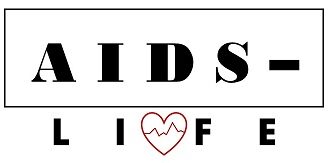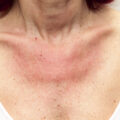Does HIV increase the risk of cancer?
Cancer in HIV-infected people
HIV affects the body's immune system by specifically targeting CD4 cells, which are a type of white blood cell.
Generally, the higher a person's CD4 cell count, the better. Low CD4 cell counts make the body vulnerable to infections. Research from 2016 also shows that lower levels of CD4 cells reduce the body's ability to fight early forms of cancer.
People with HIV are at higher risk of certain types of cancer compared to people without HIV. Let's look at the most common types of cancer among people diagnosed with HIV.
Cervical cancer
This type of cancer develops in the cervix. Most cases of cervical cancer are caused by infection with the human papillomavirus (HPV).
In the early stages of the disease, precancerous cells begin to grow in the lining of the cervix. If left untreated, they can develop into malignant cancer cells and grow deeper into the cervix. Doctors call it invasive cervical cancer.
Statistics show that, for example, in the United States, women with HIV are 66 percent more likely to develop cervical cancer than women without it.
Kaposi's sarcoma
Kaposi's sarcoma is a rare form of cancer that develops in the cells that line the mouth, nose, throat and blood vessels.
It causes red or brown swellings or lesions on the skin or mucous membranes. These tumors can also appear in other areas of the body, such as the legs, lymph nodes, and digestive tract.
Kaposi's sarcoma most often occurs in people with HIV. For this disease, doctors can diagnose stage 3 HIV infection or AIDS.
Lymphoma
Lymphoma is a form of blood cancer that affects the body's lymphatic system. Lymphoma develops in lymphocytes, which are a type of white blood cell.
Lymphoma can affect any part of the body where lymph tissue is present, including:
- Bone marrow;
- lymph node;
- spleen;
- glands;
- thymus;
- digestive tract.
There are two main types of lymphoma:
- Hodgkin lymphoma is a type of lymphoma that produces a specific type of cell called Reed-Sternberg cells. Hodgkin's lymphoma usually starts in B cells, which are special lymphocytes that produce antibodies;
- Non-Hodgkin's lymphoma refers to any type of lymphoma that lacks the Reed-Sternberg cell. Non-Hodgkin's lymphoma usually starts in the lymphatic tissue, but can also affect the skin. As with Kaposi's sarcoma, doctors diagnose AIDS by the presence of non-Hodgkin's lymphoma.
Lungs' cancer
Lung cancer develops when cells in a person's lungs mutate and grow uncontrollably, forming tumors. These tumors continue to grow and destroy the healthy cells that make up the lining of the lungs.
Anyone can get lung cancer. Genetics and exposure to hazardous chemicals and air pollution are risk factors for developing this disease.
However, smoking is the leading cause of lung cancer. According to research, smoking is responsible for 90 percent of lung cancer cases.
Anal cancer
Anal cancer develops in the cells and around the anus. Although anal cancer is relatively rare in the general population, it is more common among people living with HIV.
A 2012 study that examined rates of anal cancer among people with and without HIV found that men who have gay sex and have HIV are at the highest risk of anal cancer.
The ANCHOR research group estimates that 1 in 10 men who have same-sex sex and living with HIV will develop anal cancer during their lifetime.
Risk factors for developing cancer
People with HIV are at higher risk of certain forms of cancer due to the effect that the human immunodeficiency virus has on the immune system.
In addition, there are factors that increase the risk of developing cancer among people living with HIV. These include:
- smoking;
- injection drug use;
- alcohol consumption;
- unhealthy diet.
Many of the cancers that affect people with HIV are associated with other viruses. For example, there is a relationship between:
- Kaposi's sarcoma and herpes virus;
- anal cancer/oral cancer/pharyngeal cancer and HPV.
Coinfections, which occur when a person becomes infected with two or more separate viruses, are more common in people with HIV.
According to a 2016 study, a third of people with HIV also have the hepatitis C virus. A 2017 study found that there is a link between the hepatitis C virus and an increased risk of liver, pancreatic and anal cancer among older adults.
Reducing the risk of developing cancer
Although people with HIV may be at higher risk for some types of cancer, there are several ways to reduce this risk.
To reduce the risk of developing cancer, people with HIV need to:
- eliminate smoking and consumption of tobacco products from your life;
- do not use drugs, especially injecting ones;
- limit the consumption of alcoholic beverages;
- take HIV medications according to all recommendations of your doctor;
- undergo periodic cancer screening;
- exercise regularly;
- maintaining a balanced and healthy diet.
Treatment of cancer in HIV-infected people
Cancer treatment for people with HIV has improved due to advances in HIV treatment. In the past, doctors rarely prescribed full doses of chemotherapy or radiation therapy to patients with HIV because of the effects these treatments have on the immune system.
Today, people living with HIV generally receive the same treatment as anyone else. However, doctors closely monitor CD4 cell counts in people who are receiving both HIV treatment and chemotherapy.
Early detection and treatment of HIV also significantly reduces a person's risk of developing cancers such as Kaposi's sarcoma and non-Hodgkin's lymphoma.




